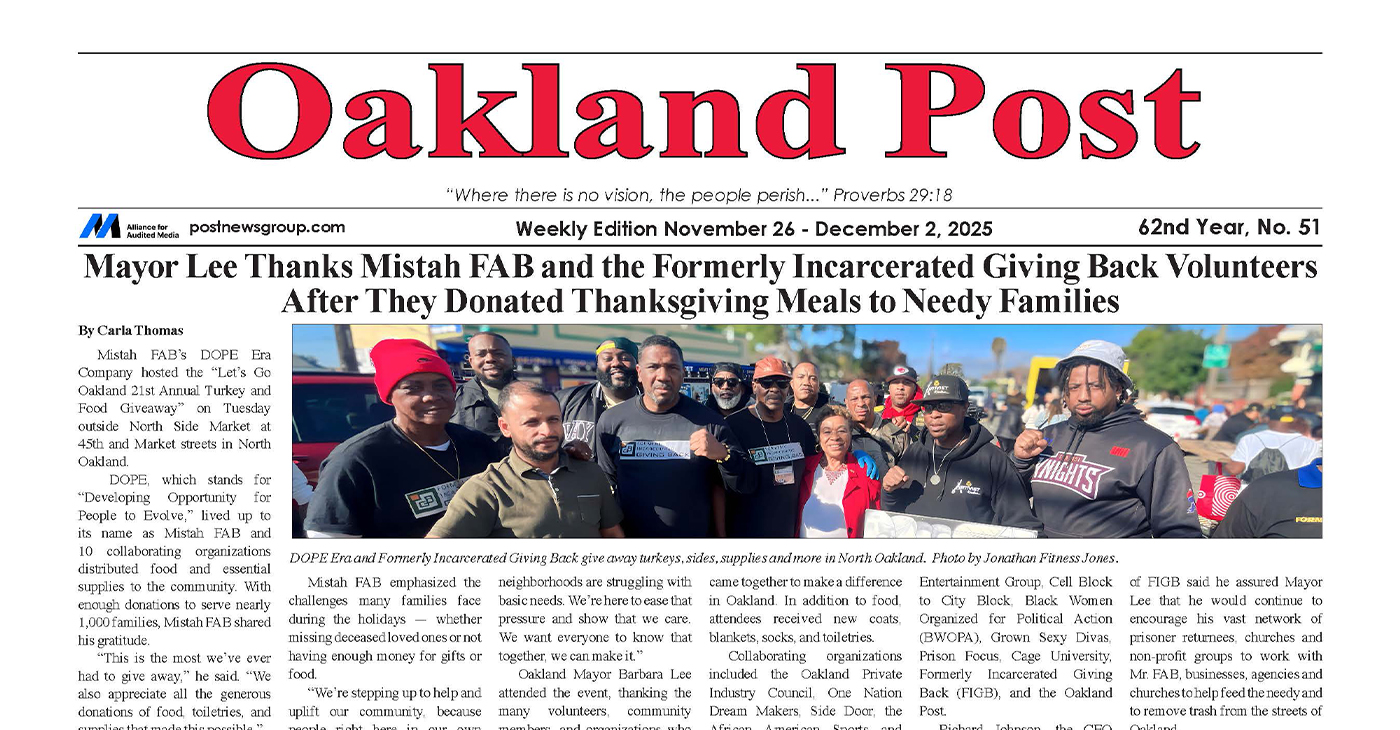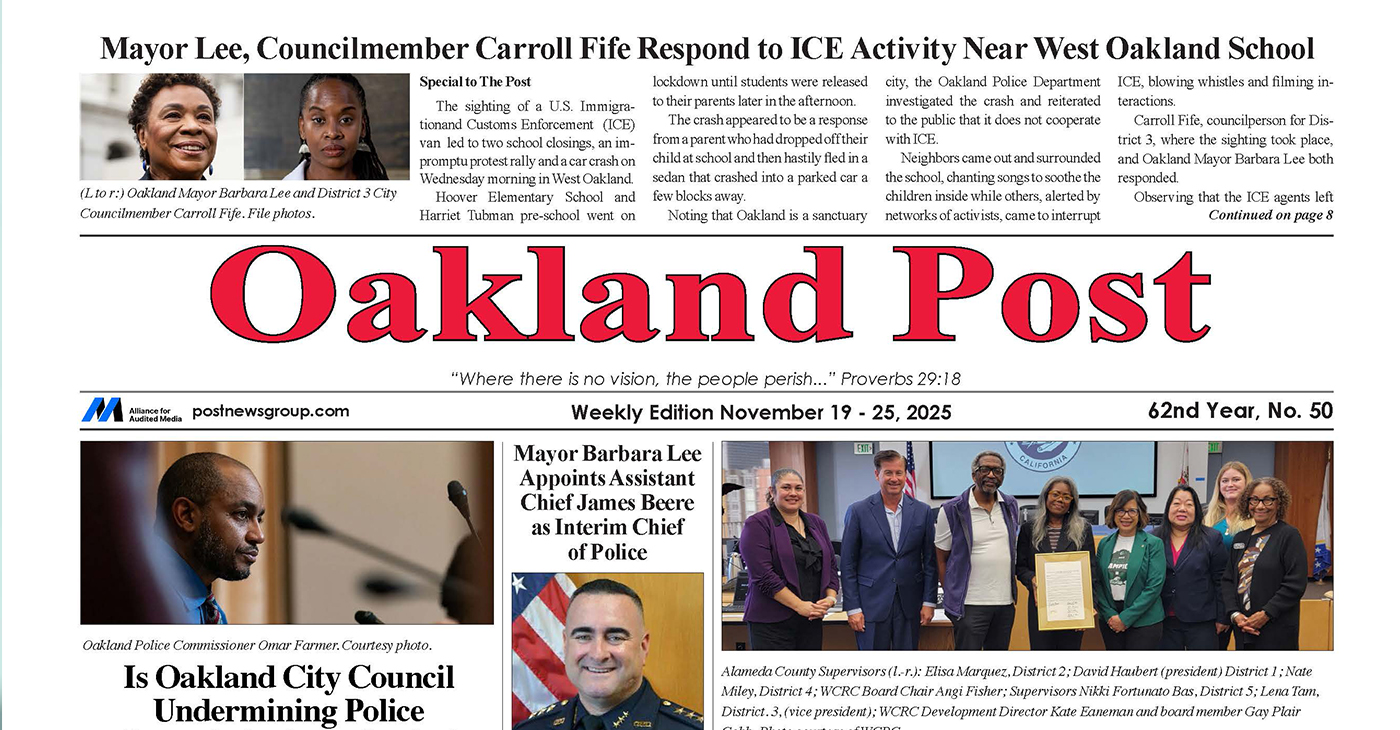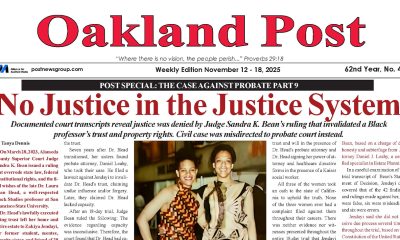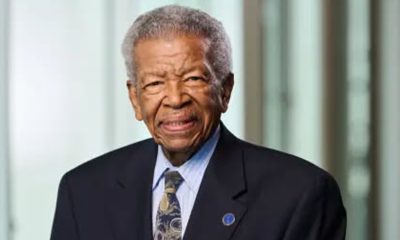Crime
County Works to Thwart Illegal Trash Dumping
THE AFRO — In early April, Prince George’s County Executive Angela Alsobrooks and Washington, D.C. Mayor Muriel Bowser spent a leisurely Wednesday afternoon walking along the boundary that separates their communities and vowed to attack the problem of illegal trash dumping.
By Mark F. Gray
In early April, Prince George’s County Executive Angela Alsobrooks and Washington, D.C. Mayor Muriel Bowser spent a leisurely Wednesday afternoon walking along the boundary that separates their communities and vowed to attack the problem of illegal trash dumping.
Last weekend, the efforts to put the clamps on the nasty scheme began as Prince George’s County Police used tips from local business owners to put a halt to an illegal dumping incident on Cryden Way near Marlboro Pike. The secret operation was part of an elaborate sting setup and executed under the watch of County Police Chief Hank Stawinski.
“Our business owners were tired of walking out of their businesses and seeing piles of trash that belonged in a dump and not across from their places of work,” Stawinski said in a statement issued by the Police Department. “ We took that tip and showed up under the cover of night and caught two construction trucks on the verge of dumping more trash, but we stopped it.”
With officers watching from the scene, two trucks full of construction trash arrived to the area and the drivers were in the process of unloading their nasty freight when they were stopped by police during this clandestine operation, according to the report. Police also said both suspects, who were arrested at the scene, had outstanding arrest warrants for traffic violations.
“We want our community to know that we take your tips seriously,” Stawinski added. “We embrace County Executive Alsobrooks’ mandate to keep our neighborhoods free of trash. We are all proud of where we work and live and we are putting illegal dumpers on notice. If you illegally dump commercial trash in our neighborhoods, you will face arrest.”
Last month Alsobrooks warned that the County would step the intensity up on illegal dumpers and that those caught could face prosecution. Prince George’s County has set up hidden cameras which have been placed throughout the area in a bid to catch those who have been illegally dumping commercial trash in neighborhoods.
May 4 was Prince George’s County’s 1st Annual “Growing Green With Pride Day” and ironically it proved to be the day where the first busts were made in their commercial clean up effort, although Stawinski warned potential illegal dumpers need to be aware that they will be vigilant every day of the year, as the County has stepped up its efforts to stop illegal dumping.
“We likewise are installing cameras to make sure that we are capturing the images of individuals who have chosen to illegally dump on either side,” Alsobrooks said after she took the walk with Mayor Bowser last month.
The County Executive was recently successful in passing legislation that targets the illegal dumping of bulky items that have been affecting communities. The new legislation defines the type of targeted items and establishes a new penalty for individuals convicted of violating the new law. Also, ten new hidden cameras have been installed throughout the County to catch people illegally dumping.
Police are still investigating other communities who may be targeted for the illegal commercial disposal.
The inaugural “Growing Green With Pride Day” on May 4 was a County-wide planting and clean-up day and the culmination of the launch to the County’s beautification campaign between the hours of 8 a.m. and 12 p.m. Once the resident volunteers finished their work, they were treated to a free appreciation picnic to celebrate the efforts of all the volunteers at Watkins Regional Park.
This article originally appeared in The Afro.
Activism
Oakland Post: Week of November 26 – December 2, 2025
The printed Weekly Edition of the Oakland Post: Week of November 26 – December 2, 2025

To enlarge your view of this issue, use the slider, magnifying glass icon or full page icon in the lower right corner of the browser window.
Activism
Oakland Post: Week of November 19 – 25, 2025
The printed Weekly Edition of the Oakland Post: Week of November 19 – 25, 2025

To enlarge your view of this issue, use the slider, magnifying glass icon or full page icon in the lower right corner of the browser window.
Activism
Oakland Post: Week of November 12 – 18, 2025
The printed Weekly Edition of the Oakland Post: Week of November 12 – 18, 2025

To enlarge your view of this issue, use the slider, magnifying glass icon or full page icon in the lower right corner of the browser window.
-

 Activism3 weeks ago
Activism3 weeks agoOakland Post: Week of November 12 – 18, 2025
-

 Activism3 weeks ago
Activism3 weeks agoIN MEMORIAM: William ‘Bill’ Patterson, 94
-

 Activism3 weeks ago
Activism3 weeks agoHow Charles R. Drew University Navigated More Than $20 Million in Fed Cuts – Still Prioritizing Students and Community Health
-

 Bay Area3 weeks ago
Bay Area3 weeks agoNo Justice in the Justice System
-

 #NNPA BlackPress3 weeks ago
#NNPA BlackPress3 weeks agoLewis Hamilton set to start LAST in Saturday Night’s Las Vegas Grand Prix
-

 #NNPA BlackPress2 weeks ago
#NNPA BlackPress2 weeks agoBeyoncé and Jay-Z make rare public appearance with Lewis Hamilton at Las Vegas Grand Prix
-

 #NNPA BlackPress3 weeks ago
#NNPA BlackPress3 weeks agoThe Perfumed Hand of Hypocrisy: Trump Hosted Former Terror Suspect While America Condemns a Muslim Mayor
-

 #NNPA BlackPress3 weeks ago
#NNPA BlackPress3 weeks agoTrump’s Death Threat Rhetoric Sends Nation into Crisis



















































